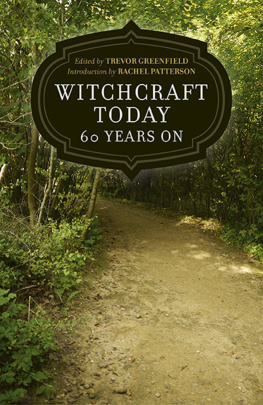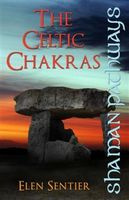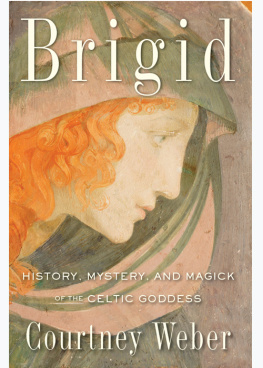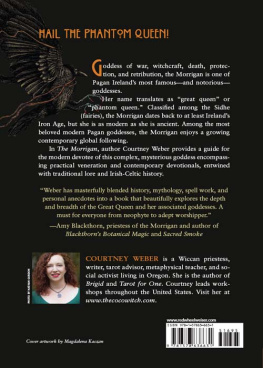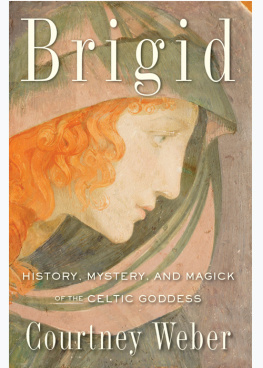Trevor Greenfield - The Celtic Goddess
Here you can read online Trevor Greenfield - The Celtic Goddess full text of the book (entire story) in english for free. Download pdf and epub, get meaning, cover and reviews about this ebook. year: 2018, publisher: Moon Books, genre: Science fiction. Description of the work, (preface) as well as reviews are available. Best literature library LitArk.com created for fans of good reading and offers a wide selection of genres:
Romance novel
Science fiction
Adventure
Detective
Science
History
Home and family
Prose
Art
Politics
Computer
Non-fiction
Religion
Business
Children
Humor
Choose a favorite category and find really read worthwhile books. Enjoy immersion in the world of imagination, feel the emotions of the characters or learn something new for yourself, make an fascinating discovery.

- Book:The Celtic Goddess
- Author:
- Publisher:Moon Books
- Genre:
- Year:2018
- Rating:4 / 5
- Favourites:Add to favourites
- Your mark:
- 80
- 1
- 2
- 3
- 4
- 5
The Celtic Goddess: summary, description and annotation
We offer to read an annotation, description, summary or preface (depends on what the author of the book "The Celtic Goddess" wrote himself). If you haven't found the necessary information about the book — write in the comments, we will try to find it.
The Celtic Goddess — read online for free the complete book (whole text) full work
Below is the text of the book, divided by pages. System saving the place of the last page read, allows you to conveniently read the book "The Celtic Goddess" online for free, without having to search again every time where you left off. Put a bookmark, and you can go to the page where you finished reading at any time.
Font size:
Interval:
Bookmark:
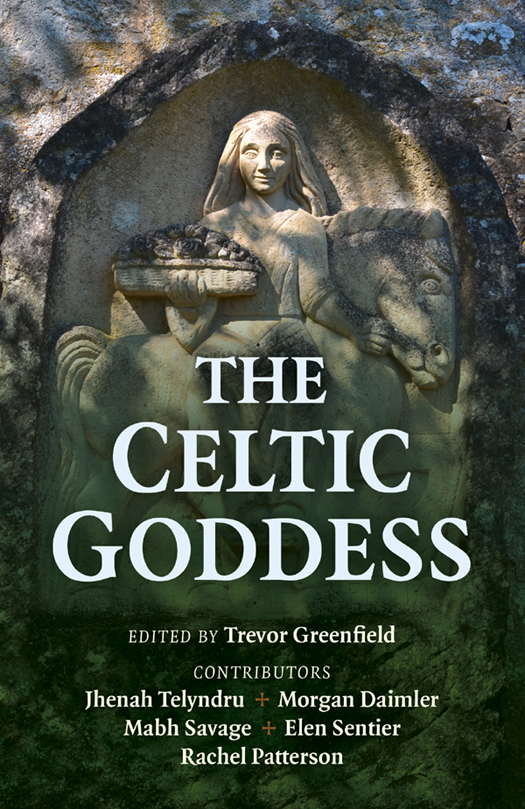
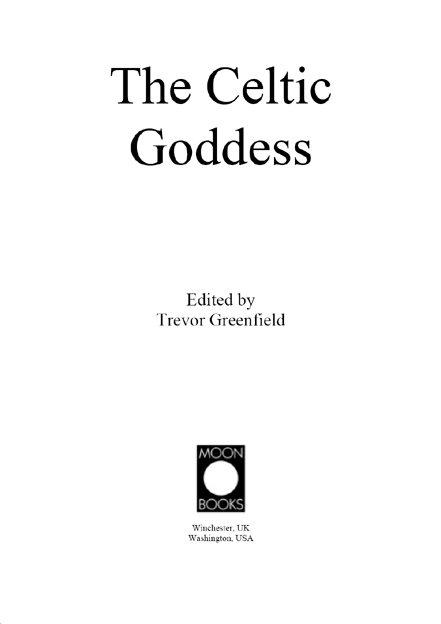
First published by Moon Books, 2018
Moon Books is an imprint of John Hunt Publishing Ltd.
No. 3 East St., Alresford
Hampshire SO24 9EE
www.johnhuntpublishing.com
www.moon-books.net
Text copyright: Trevor Greenfield 2018
ISBN: 978-1-78904-084-5
All rights reserved. Except for brief quotations in critical articles or reviews, no part of this book may be reproduced in any manner without prior written permission from the publishers. The rights of Trevor Greenfield as Editor have been asserted in accordance with the Copyright, Designs and Patents Act 1988.
We operate a distinctive and ethical publishing philosophy in all areas of our business, from our global network of authors to production and worldwide distribution.
The Goddesses of Celtic culture have long fascinated and drawn people, surviving into modern times in folklore and poetry, in fairy tales and modern fiction. For neopagans, however, these Goddesses remain essential parts of spirituality, and many modern seekers find themselves on quests to better understand who these deities were and are. This text is meant as a guide along that quest, a first step towards meeting a variety of Goddesses from several different Celtic cultures. Each is rooted in shared mythic symbolism and language but each is also distinct and comes with her own stories and personality. In the following chapters you will get to meet six of them, from the perspectives of different authors, and hopefully these introductions will be solid first steps on a much longer journey.
People often mistakenly think there is a single cohesive Celtic pantheon, and indeed many pagan books will offer lists of deities in this pantheon, although it is something of a misnomer. It would be more accurate to say that there are multiple Celtic cultures, related by language and art, and that each of these has unique pantheons to be appreciated. The term Celtic is something of an umbrella term used by academics and adopted by popular culture to describe these related cultures. We might say that these different Celtic cultures are like siblings in the same family, who have many things in common but are not identical to each other. We can appreciate that the place of one Goddess in the Welsh pantheon, like Rhiannon, may bear some resemblance to an Irish deity like the Morrigan while also appreciating the things that make each of them unique. There are also a handful of pan-Celtic deities to be found who we can see guises of in all or many of the different cultures; Brighid is one example of a pan-Celtic Goddess. Its important to understand these various cultures for what they are both because it allows us to appreciate the modern living cultures fully and also because it gives us a deeper understanding of the amount of material and context that we may have for each deity. Learning about the Celtic Goddesses then begins with an appreciation for the different roots they each have within these various cultures and how those roots have shaped them over time.
Goddesses have always played an important, one might even say intrinsic, role within Celtic cosmology and spirituality and that role has not diminished in the modern era. When we look at historic Celtic belief we can find this central role of Goddesses reflected in the pattern of kings having to marry or otherwise receive the blessing of the sovereignty Goddess in order to secure their right to rule. If that king later proved unfit or ruled badly the goddess would intervene to remove him and make way for a new, better, candidate to take over. We also see this importance reflected in the variety of local Goddesses, usually deities of sovereignty for their own specific areas, and in the way that Celtic Goddesses arent pigeon holed into specific limited purviews but could be and were powerful deities of war, battle, kingship, and wisdom. Perhaps we can also argue that we see their deep value in the way that no matter how the world has changed, no matter how the cultures they are anchored in have changed, they have found ways to survive hidden in saints and fairy queens and fairy tales. Times change but the Goddesses find ways to remain with us, evolving as our needs evolve so that they are as relevant today as they ever have been yet still cloaked in ancient power and mystery. Celtic Goddesses shaped the world in many stories, they foretold victory and success, they guarded the harvest and gave fertility to crops and livestock ensuring their people thrived. These Goddesses have always been and remain active forces in the world.
Those who seek Elen, Brighid, the Cailleach, Rhiannon, the Morrigan, and Badb will find a good beginning here. The first step in connecting to any of these Celtic Goddess is often to find out as much as you can about her and while this may sound simple it often presents a far greater challenge than anticipated. These are ancient deities, without doubt, but often their pasts are shrouded in mystery, with as many things about them that we may never know with certainty as questions that can be easily answered. As we move towards understanding who they are sometimes a good beginning will come in a personal anecdote of modern connection from a fellow traveller on this same path; other times the road may start in older mythology; sometimes the best start will lie in a blend of both. None of these deities exists only in the cold pages of the past but all are living and vital today and to find and understand who they are we must find their roots in history as well as their living truth now. The more you look the more you will realize waits to be found.
Celtic Goddesses are complex and multi-layered as you will see as you read further. Their stories weave throughout the land and spirit of the various Celtic countries and their power shines still in the hearts of those who honour them. They are divine Queens and wisdom givers, healers and prophecy speakers, and all of them have much to teach us. For some people understanding them is in understanding their past and mythology; to others the key to knowing the enigmatic deities lies within each individuals heart. What you will find in this book is a blend of these approaches, head and heart, welcoming you to take your first steps in meeting these Goddesses or perhaps helping you as you look deeper into who they each are.
Discover more about Goddesses in Celtic Culture
Elen is the reindeer goddess of the Boreal Forest, the largest forest on Earth that extends all around the northern hemisphere from the Tundra down to the latitude of the southern tip of Cornwall. Britain was part of it. The Greeks called the north wind Boreas and named Britain Hyperborea, meaning the land behind the North Wind, so we British were the Hyperboreans. I love being of the people from behind the North Wind.
The Boreal Forest is the world of the reindeer, they thrive there, and reindeer lived in the Highlands of Scotland until around 8,000 years ago when, because of climate change, farming and hunting they became extinct. Reindeer are the only deer where the female, as well as the male, carries antlers. Elen is the antlered goddess, her symbol is the antlered female reindeer, and its prevalent all over the northern hemisphere. The earliest picture so far found in Britain is a beautifully stylised drawing of a reindeer, found in 2011 in Cathole Cave in West Wales, which dates from 14,500 years ago, nearly 5000 years before the end of the last Ice Age.
Font size:
Interval:
Bookmark:
Similar books «The Celtic Goddess»
Look at similar books to The Celtic Goddess. We have selected literature similar in name and meaning in the hope of providing readers with more options to find new, interesting, not yet read works.
Discussion, reviews of the book The Celtic Goddess and just readers' own opinions. Leave your comments, write what you think about the work, its meaning or the main characters. Specify what exactly you liked and what you didn't like, and why you think so.

